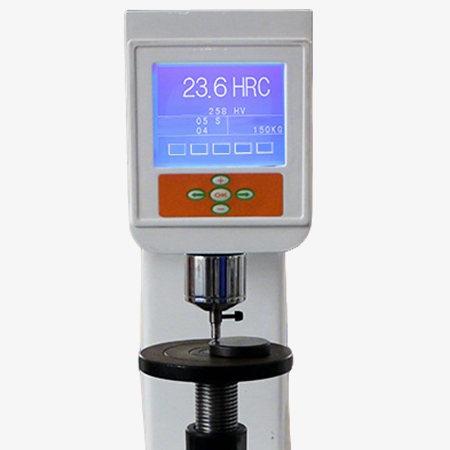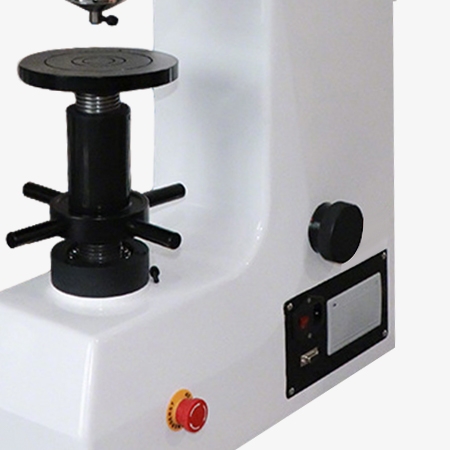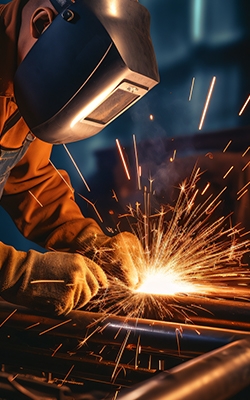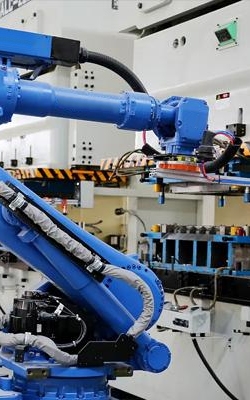A button operated digital Rockwell hardness tester is a precision instrument used to measure the hardness of metals and alloys. It features a digital display for easy reading of hardness values and is operated using initiate the measurement process through simple button controls. This design ensures accurate control of test parameters.

Key Press & Digital Display
- Simple and User-Friendly Operation. The key press feature significantly simplifies the operation. This convenience not only speeds up the testing process but also reduces the learning curve for new users.
- Time-Saving and Efficient. With traditional testers, multiple manual steps are often required, which can slow down operations, especially when handling a high volume of tests. A digital Rockwell tester with key press streamlines the entire procedure.
- Easy-to-Read Display. The digital display offers clear, real-time readouts of hardness values, eliminating the need for manual interpretation. Users can view the results instantly.

Digital Rockwell Hardness Tester Equipped With Built-in Printer
- Enhanced Efficiency and Productivity. The integration of digital readouts and built-in printers streamlines the testing process. Operators can perform tests, record results, and generate reports all in one continuous workflow without the need to manually transcribe data. This efficiency not only saves time but also reduces the workload on staff.
- Immediate and Accurate Data Output. One of the most significant advantages of Rockwell tester having a built-in printer is the ability to instantly print the hardness test results directly after each measurement. This eliminates the risk of manual recording errors that often occur during transcription from the digital display to paper or digital records.
Applications
Rockwell hardness testers are widely used in various industries to measure the hardness of materials, particularly metals and alloys. One major application field is the metallurgical industry, where it ensures the quality and uniformity of steel, aluminum, and other metal products. In automotive manufacturing, Rockwell hardness testing is used to evaluate engine components, gears, and axles for wear resistance and durability.

Metal Processing

Mechanical Manufacturing

Laboratory

Metallurgical Industry
| Model | SISCO-HT-HRS-150 |
| Power Supply | AC 220V/110V |
| Initial Test Force | 10kgf (98.07N) |
| Test Force | 60kgf (588.4N), 100kgf (980.7N), 150kgf (1471N) |
| Rockwell Scale | HRA, HRB, HRC, HRD, HRE, HRF, HRG, HRH, HRK |
| Measurement Range |
HRA: 20-88 HRB: 20-100 HRC: 20-70 HRD: 40-77 HRE: 70-100 HRF: 60-100 HRG: 30-94 HRH: 80-100 HRK: 40-100 HRL: 50-115 HRM: 50-115 HRR: 50-115 |
| Hardness Resolution | 0.1HR |
| Dwell Time | 1~60s |
| Display Method | LCD display |
| Specimen Allow Maximum Height | 180mm |
| Pressure Head to Inner Wall | 140mm |
| Dimension | 433*241*625mm |
| Net Weight | About 70kg |
Q1: What is a Rockwell hardness tester?
A1: A Rockwell hardness tester is a device used to measure the hardness of materials, typically metals and alloys, by assessing their resistance to indentation. It operates by pressing a steel or carbide ball, or a diamond cone (indenter), into the material's surface under a specific load. The depth of the indentation is then measured, which determines the Rockwell hardness number (HR).
Q2: What factors can affect the accuracy of Rockwell hardness tester readings?
A2: Several factors can affect the accuracy of Rockwell hardness gauge readings. Surface preparation is critical; rough, dirty, or uneven surfaces can distort results. Test specimen thickness must meet minimum requirements to avoid substrate influence. Incorrect or worn indenters, improper test loads, or mechanical misalignment of the tester can lead to errors.
Q3: What maintenance is required for a Rockwell hardness tester?
A3: Maintenance for a Rockwell hardness tester includes regular cleaning to remove dust and debris from the indenter and anvil. Ensure the indenter is free from damage or wear. Check for any loose screws or parts and tighten them if needed. Store the tester in a dry, dust-free environment to prevent corrosion.
Tips: What is the difference between digital and analog Rockwell hardness tester?
Digital Rockwell hardness testers use electronic systems to display hardness values on an LCD screen, offering higher accuracy, faster readings, and easy data storage. They often feature automatic load application and built-in printers for recording results. In contrast, analog Rockwell hardness testers rely on mechanical dial indicators and require the operator to manually control loading and unloading processes. Manual models are more affordable and durable but are less convenient for frequent testing or data analysis. Digital models are preferred in modern laboratories and production environments, while manual testers are often used in workshops for basic, reliable hardness measurements.
Thank you for buying industrial test and measurement equipment on SISCO.com, all products sold by SISCO and the partner cover a 12 months warranty, effective from the date of receiving the products.
What is covered?
SISCO is responsible for providing free spare parts, and free technical support to assist the customer to repair the defective products until the problem is solved.
What is not covered?
- Product purchased from anyone other than a SISCO store or a SISCO authorized reseller.
- Expendable parts.
- Routine cleaning or normal cosmetic and mechanical wear.
- Damage from misuse, abuse or neglect.
- Damage from use of parts other than SISCO approved.
- Damage from use outside the product’s usage or storage parameters.
- Damage from use of parts not sold by SISCO.
- Damage from modification or incorporation into other products.
- Damage from repair or replacement of warranted parts by a service provider other than a SISCO authorized service provider.
- Damage caused by the application environment not meeting the product usage requirements and the failure to perform preventive maintenance.

